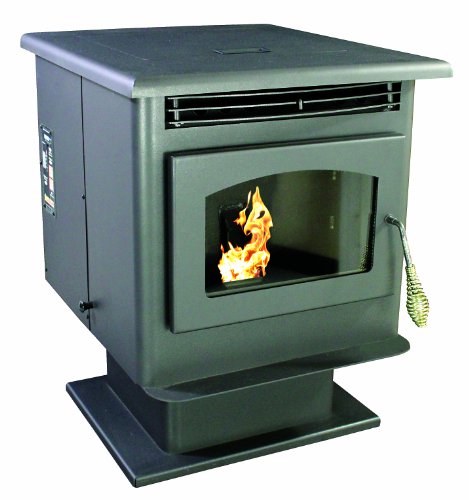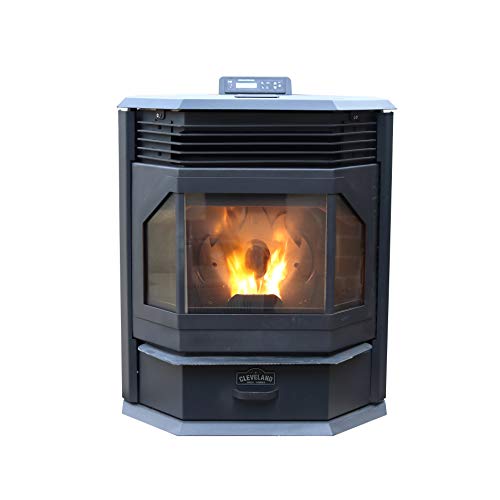10 Things That Your Family Teach You About Ventless Pellet Stove
페이지 정보

본문
 The Benefits of a Ventless Pellet Stove
The Benefits of a Ventless Pellet StovePellet stoves produce heat using pellets, repurposed lumber byproducts that burn with little or no carbon emissions. They're considered to be green because they burn byproducts of renewable sources and consume less energy than gas or wood stoves.
 You'll need to vent your pellet stove properly for you to get the most benefit from it. Employing a professional will ensure that your venting is in compliance with the local regulations and safety standards.
You'll need to vent your pellet stove properly for you to get the most benefit from it. Employing a professional will ensure that your venting is in compliance with the local regulations and safety standards.Eco-Friendly
Pellet stoves are more efficient in energy use than traditional wood-burning fireplaces. The fuel source, pellets, is also a renewable resource that doesn't cause as much pollution as natural gas or fossil fuels derived from petroleum. The process of combustion does create carbon monoxide, as well as particulate matter. It is crucial to clean your exhaust system and stove regularly to keep them working properly.
Proper maintenance of your pellet stove can help ensure that it is operating properly and safely, ventless pellet stove and ensure you're receiving the best heating performance that you can get. Regularly cleaning the burn pot, hopper, and exhaust vents will stop the accumulation of ash that can decrease the efficiency of your stove. In addition, making sure your chimney and stove are properly ventilated, and have the proper height and distance from the walls of your house's exterior will help you avoid the dangers of carbon monoxide accumulation.
Venting for a pellet stove could be accomplished via the wall, ceiling or even the roof of your home. The type of venting you select will depend on your home and personal preferences. Vertical venting is preferred as it keeps the flue gas warm, thereby increasing the efficiency of the stove. It also eliminates the possibility of smoke getting into your home in the event of an outage.
Venting kits can be purchased for your pellet stove to ease installation and ensure proper operation of your stove. The kits typically come with an flue pipe insulated from stainless steel that connects directly to the stove on one side and connects to the chimney of your home's masonry or vent through the wall of your home or roof on the other. These kits should be put in place by a professional installer to ensure that the stove is safe and in compliance with your area's building codes and regulations.
A pellet stove is an excellent option for anyone who seeks a reliable method to heat their home while having a minimal impact on the environment. If you are concerned about the impact of your stove emissions on the environment, you should consider using alternative fuels like liquid propane gas or biodiesel to heat your house.
Easy to Operate
Pellet stoves can be a great alternative for homeowners who want the look of wood-burning stoves but don't have the time to clean chimneys and ashes. A pellet stove is a sealed device that includes a hopper for the pellets along with a combustion chamber and a fan to push heated air into the room. The stove can be controlled by an electronic remote or thermostat. The thermostat can be set to an appropriate temperature so that you don't need to keep changing the settings.
Pellets are tightly compressed and burn extremely hot. They are much more efficient than wood-burning stoves and fireplaces. They also produce less creosote that can be a potential fire hazard. Pellet stoves are simple to use, clean and maintain.
In contrast to other types of fuel pellet stoves self-ignite. A small, hot surface igniter, controlled by the circuit board, warms the pellets and starts them burning. The pellets are then blown away from the burner via a tube into an exhaust fan which pushes the gas and smoke out of the stove through the vent. The exhaust that has been filtered is discharged through the cleanout tee into the wall, or out through the roof dependent on the type of installation you have and local codes.
Most pellet stoves have direct venting. Certain pellet stoves are offered as freestanding units that can be incorporated into an existing fireplace. They can also be tucked away in the hearth. They can be ducted pellet stove to your home's venting system, but aren't equipped to provide the same heat as a stove vented through a fireplace.
The hopper in your pellet stove is located in the rear. The capacity of the hopper varies, and you'll need to replenish it when the fuel supply is low. It's recommended that you buy a larger hopper because it will permit you to use the stove for longer periods of time between refills.
The hopper and the blower are operated by a circuit board which also regulates other aspects of the stove's functions. The circuit board controls the amount of pellets being fed into the burner, and the flow of air through the hopper. The hopper also has sensors that help to regulate the operation of the stove.
Convenient
A ventless pellet stove is a great choice if you are looking to heat your house without having to deal with pellets or a complicated venting. indoor pellet stove stoves operate by burning compressed wood pellets that are readily accessible in 40-pound bags. These pellets are made from recycled wood shavings and sawdust.
It is incredibly simple to operate. All you have to do is load them and set the thermostat, then turn on the fan. The stove will automatically adjust to maintain the desired temperature.
Pellet stoves make use of natural convection to heat rooms but many models have a blower to aid in this process. The blower draws cool air into the stove and then passes it over the heat exchanger on top of combustion chamber. The heat exchanger transmits warmth from the burning pellets to air that circulates in your home.
Since pellet stoves burn a clean fuel, they generate very little ash. This means you'll need to clean your ash container or drawer on a regular schedule. Modern stoves have an easy-to-access drawer for ash, which makes the process as easy as taking it out and disposing of the ash.
A pellet stove that has a back up power source will function even when the main electricity is off. But this feature comes with an additional cost, and backup power sources are only good for about 8 hours. If you're concerned about a possible power outage then consider buying gas stoves instead.
A ventless pellet stove will still require a flue, however, the flue can be run across the horizontal direction to your chimney made of masonry or through an exterior wall. Installing ventless pellet stoves is much simpler and less expensive since you don't need to run a pipe through the ceiling and down your roof.
Efficient
Pellet stoves consume less energy than other fireplaces using wood. Certain models are rated up to 99percent efficient. They achieve this by using technology to ensure that the pellets are burned completely before they leave the combustion chamber. This is made possible by advances in the design of combustion chambers and the use of programmable thermostats. These innovations help to ensure the heat produced in the home is evenly distributed.
Contrary to other fireplaces with wood burning, which produce distasteful smells and require messy cleaning tasks, pellet stoves release very little or no odor and are a breeze to maintain. You only need to empty and ventless pellet stove fill the hopper once or twice every day and you don't have to carry large bags of firewood or cut it down or purchasing it.
Pellet stoves can be a fantastic heating system. They are typically less expensive than a gas or wood-burning fireplace and can be incorporated into hot water systems for domestic use to help reduce your energy bill. Pellet stoves can also be used pellet stoves for sale to heat just one room, which will lower your heating expenses.
There are several factors to consider prior to purchasing a pellet stove. Pellet stoves are powered by electricity, which means they won't function during a power failure. This is a major consideration for homeowners who live in areas with frequent power outages. However, some manufacturers offer battery backup systems that can give you some extra hours of operation.
While pellet stoves are extremely efficient, they don't provide the same amount of warmth as vented fireplaces. This could be a concern in the event that you own an enormous house or live in chilly climates.
In order to maximize the efficiency of a pellet stove, it should be properly sized and maintained. A certified professional can assess your home and determine the proper size of stove to meet your heating requirements. Homeowners should also wash their stoves regularly and have them professionally cleaned around once a yearly. They should also adjust the settings of their stoves to match their needs for heating and insulate their home properly to cut down on energy use.
- 이전글The Most Innovative Things That Are Happening With Buy A Driving License 25.02.01
- 다음글The Reasons You're Not Successing At Adhd Assessment Uk 25.02.01
댓글목록
등록된 댓글이 없습니다.
